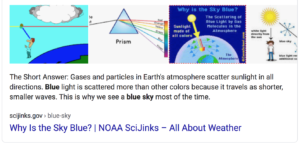Influencer Marketing Tips: Finding the Right Influencers for Your Brand
Influencer marketing allows brands to easily break into the consumers’ circle of trust in a way that feels more organic and welcomed. It’s relevant, reliable and relatable, making it an extremely effective marketing tool for brands.
Are you looking into influencer marketing but not sure where to start? Here are our top tips to help guide your search and create a successful campaign.
1. Know the type of influencer campaign you’re going to run.
As you begin mapping out your marketing plan, identifying the specific type of influencer campaign you want to run is crucial. This will in turn help you connect with the best influencer and help you reach your campaign goals. Different types of influencer campaigns include:
- Gifting. This entails giving the influencer free products in exchange for shoutouts, mentions, posts, etc.
- Guest posting. The influencer would get to create a post for you that you would then be shared directly on your page.
- Sponsored content. You would pay the influencer to share your content or create content that is somehow tied to your brand.
- Contests/Giveaways. Using contests as an incentive to get influencers to mention your product, brand or share your content.
- Takeover. You would be allowing the influencer to completely take over your social media page for a set amount of time.
- Affiliates. Share affiliate codes with influencers so they can earn money each time a user comes through their funnel and purchases from your brand.
- Discount codes. Allowing influencers to give discount codes for your offerings to their own followers.
- Brand ambassadors. Partnering with an influencer who would then regularly promote your brand in exchange for discounts, deals and additional perks from you.
2. Research influencers relevant to your niche.
A great place to start finding influencers is by looking at famous, well-known or respected figures in your industry. This will not only increase the reach of your message and build more brand awareness, but drastically enhance your authority within the industry as well. While this can be difficult for smaller brands, it’s not impossible. You just have to prove why you stand out from others in your industry and get in contact with the proper people.
To support this strategy, set up Google alerts for industry terms to see who is regularly writing content about important topics in your industry. You can also try browsing forums to see who might be regularly answering questions related to your industry.
3. Research competitors’ influencers.
It’s not uncommon for influencers to work with two competing brands, as long as both brands agree to it. So, to find influencers that are likely to work with your brand, look for those who are already working with brands like yours. Another benefit of this is that since they already create content or write about others in your industry, you won’t have to do much educating on your niche.
Finding these influencers should be fairly easy. You can browse industry-related hashtags on different social platforms to see who is already sharing content and engaging with competitors. You can also look through competitors’ pages to see if there are any influencers working with them that look like they would be a good fit for you as well.
4. Find influencers that already share your audience.
It’s not necessary for an influencer to be directly tied to your industry to be effective. Influencers who share your audience can provide just as much value. Actually, working with influencers in an industry that overlaps or is complimentary to your own can help you extend your reach even further. It also connects you to your audience in a space that isn’t already saturated with messages from your competitors.
To find these influencers start by doing a target audience analysis. This will help you to fully understand your ideal audience, their needs, interests and other sites they frequent. This can help you to then identify other non-industry-related influencers that your audience already follows.
5. Audit potential influencers’ following, reach and engagement metrics.
Once you’ve identified a few different influencers you’re considering, start evaluating their authority. Or in other words, determine if they have a large enough reach to help you accomplish your campaign goals. An influencer analysis consists of looking at factors such as:
- Number of followers
- Engagement rate of their followers
- Type of regular content
- Quality of content
- The depth of niche coverage
Final Thoughts
A strategically planned influencer marketing campaign that leverages the influencers most relevant to your goals, audience and niche can lead to big results for your campaign and brand as a whole.
Onimod Global releases the latest digital marketing news and essential marketing tips every Tuesday and Thursday! To catch up on the top digital marketing news and trends, click here. To find out more about who we are and what we do, click here.



